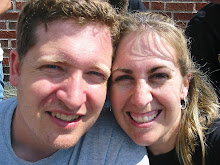
In our case, we are interested in making a deletion. Now the coolest thing about the particular Cre mouse we have is that we can control where and when the enzyme is expressed. The where is controlled by a sequence of DNA found upstream of the enzyme called a promoter. In this case, the promoter is specific for schwann cells. The when is controlled by an estrogen receptor that is sensitive to tamoxifen. When I breed a cre mouse (a hemizygote) with a mouse containing loxP sites (a homozygote), I get offspring that are able to knockout Merlin expression when I treat them with tamoxifen. How cool is that?
I just got my first round of mice treated and performed my first Merlin IP in order to determine if the system worked. I have yet to run the gel but when I do, I will post the gel.
Science rules.


